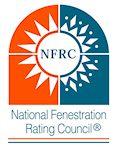There is a certain serenity found in the grain of sawed wooden planks, and watching their inner beauty revealed continuously throughout the day as the sun tracks its way across the sky is a unique joy. Hardwood floors speak to our sense of permanence, resilience and home.
All this beauty carries responsibility, too: hardwood flooring demands special attention and regular maintenance to keep it beautiful for years to come. Before installing a hardwood floor, it is essential to weigh the pros and cons carefully.
Here are the seven most important factors to consider:
Investment Value vs. Cost
First and foremost, installing a hardwood floor is an excellent long-term investment in your home. Property installed and maintained hardwood floors wear exceptionally well, and there are original hardwood floors in antique homes well over a century old. Moreover, the value of your hardwood floor will only increase over time.
Conversely, hardwood floor materials and installation are significantly more expensive than carpeting or other flooring options. Long term, there is a better return on investment since it is unlikely the floor will need to be replaced in your lifetime. That being said, the up front cost of installing a hardwood floor over a subfloor in an existing construction or building a new home with a hardwood floor requires some serious capital.
Installation vs. Maintenance
Thanks to advances in construction design and technology, installing a hardwood floor is far easier than in the past. Most experienced home DIY enthusiasts are up for the challenge, though professional installation delivers the best results. After all, one mistake in the alignment of any of the tiles or planks, and the look of the room is ruined.
Post-installation, the primary concern becomes maintaining your hardwood floor in the best possible condition to preserve your investment. Each type of wood and finish has different requirements, and regular sweeping with a soft broom or brushless vacuum is critical to preventing scratching and wear in high traffic areas.
Some homeowners choose to place rugs over trouble spots, but if you don’t keep up with dirt accumulation and cleaning, the finish and wood grain will become dulled. If you are willing to put in the time or you can afford to hire a professional to clean for you, it’s a marginal concern. For homeowners with busy lifestyles though, this should be a critical deciding factor.
Variety vs. Vulnerability
From a design standpoint, nothing is easier to integrate than hardwood flooring. The variety in wood grain patterns, color palette and plank/tile design is nearly endless. Homeowners with the capital and desire to install hardwood flooring will find that there is no aesthetic taste or room design that cannot be accommodated by the artful implementation of a hardwood floor.
Due to the natural vulnerabilities of wood, however, it is not suitable for every room in a home. Many homeowners and designs opt for stone, tile or laminate flooring in kitchens and bathrooms because hardwood flooring cannot tolerate long term exposure to moisture. Mold, warping, crowning and other consequences of high humidity environments can destroy hardwood floors rapidly without strict maintenance, and so most designers will not use hardwood floors where excess moisture is a concern.
Quality vs. Care
The appearance and durability of hardwood flooring is undeniable: it’s gorgeous and lasts a lifetime when you maintain it well. Even high quality laminate floors cannot compare to the unique appearance of natural wood grain. When real wood is used to create planks, every floor is as unique as the tree that formed it. Laminate flooring attempts to imitate this natural appearance, but it is still dependent on existing wood grain patterns and can look “too perfect”.
Conversely, taking care of a laminate floor is significantly easier and offers better durability in high humidity environments than hardwood floors. They may not have the same richness about them as hardwood flooring, but they are far easier to care for over time. Essentially, homeowners will need to consider which is more valuable: the quality of their flooring materials or their time.
Acoustics vs. Noise
For musicians and audiophiles, there is no better flooring material than hardwood. The denser the material, the better it is, too. Wooden instruments naturally reflect and amplify sound due to their fibrous nature, and even when cured and encased in varnish they add a warmth to the reflected sound that cannot be replicated.
That being said, over time hardwood floors tend to wear unevenly across the surface, creating irregularities in the tension of the planks. This causes creaking and popping when the planks are under pressure, creating a lot of excess noise as room temperature changes and people walk across the floor. At best, hardwood floors are an ideal acoustic floor panel, but they can become an echoing drumhead without proper upkeep.
Sustainability vs. Material Limitations
Choosing actual hardwood is a better ecological choice depending on how you source materials for your flooring. Reclaimed wood is a popular choice, though there are sustainable growth wood varieties that provide excellent sustainability, too. Laminate flooring manufacturing may not involve harvesting slow growth tree harvesting, but it does generate significantly more chemical waste during its manufacturing process.
The chief drawback with choosing sustainable wood for your hardwood floor is that, with the exception of bamboo, most sustainable wood varieties are more vulnerable to moisture penetration.
Managing temperature and humidity in rooms with hardwood flooring becomes a critical concern, and many homeowners don’t have the time or the environmental controls to maintain the best conditions for a hardwood floor. It’s only a concern for the ecologically conscious homeowner, but without advance research, homeowners can end up damaging the long term value of their investment.
Aesthetics vs. Practicality
The hardwood aesthetic is the most highly sought after feature for buyers looking for a new home or an investment property. Homeowners seeking to increase their asking price can accomplish this by installing hardwood floors in the rooms which best take advantage of the hardwood aesthetic. Homeowners should the patient, however, as they will not receive a return on this investment until they sell their home.
The fundamental question when considering whether to install a hardwood floor is this: given your lifestyle, is a hardwood floor practical? Hardwood flooring provides better air quality for children and babies, but it also requires more maintenance and protection in a busy environment. If a home has multiple high traffic areas, many homeowners find they have a hard time keeping up with the sweeping, mopping and drying necessary to prevent long term damage.
In the end, it all comes down to how much time and money a homeowner is willing to spend to install the flooring they want in their home. The wise homeowners consider all these pros and cons in advance to ensure they get exactly the floor they want, so they can enjoy it for a lifetime.
Are you a Dallas, Fort Worth, Austin, Houston or San Antonio considering an upgrade for your flooring? Starwood Distributors has the experience and selection you need to find that perfect floor for your new or existing home. Contact us today to schedule a free consultation.










